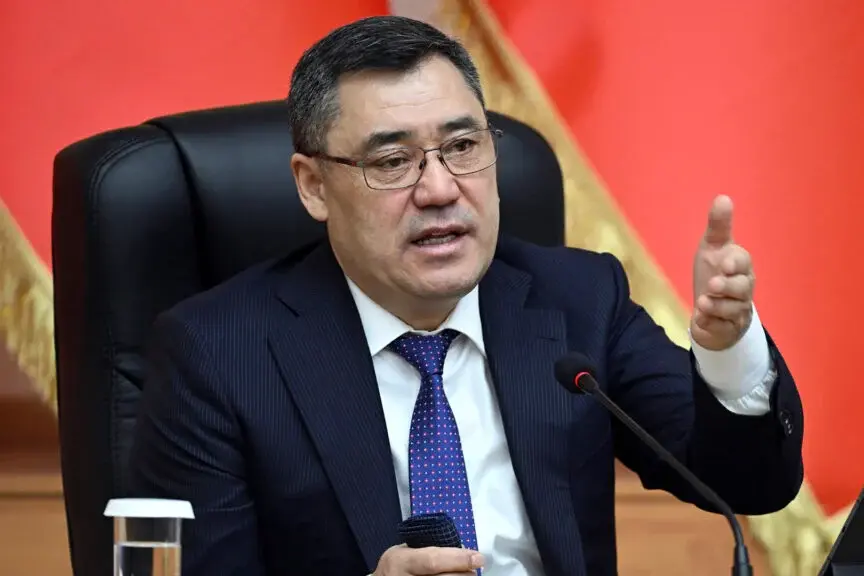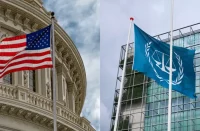It took half a year to get everything into motion, but the US is now poised to go through with its destabilization plans on the pretext that Blinken signaled last month regarding Kyrgyzstan’s impending FARA-inspired foreign agents in a replication of last spring’s Georgian scenario.
Kyrgyz President Sadyr Japarov broke diplomatic protocol by publishing his response to a letter that he received from US Secretary of State Antony Blinken in mid-January. It can be read in full here and was summarized by RT here. In short, he argues that Blinken has been duped by those Kyrgyz-based “NGOs” that it funds into thinking that his country’s impending FARA-inspired foreign agents law is a threat to civil society. President Japarov doesn’t say so, but he’s concerned about forthcoming US meddling.
That’s a reasonable worry too since this exact same pretext was exploited last spring to destabilize Georgia, which at the time had passed a similar FARA-inspired foreign agents law but withdrew it under Color Revolution pressure, though the country still remains in the US’ crosshairs. Last summer, Kyrgyzstan thwarted a coup attempt that could have opened a “second front” in the US’ proxy war on Russia, several months after which a top US Senator implied regime change intentions.
The basis upon which scandal-beset Bob Menendez strongly signaled such was a report that Kyrgyzstan helps Russia evade the US’ sanctions, but the real reason is that it’s a geostrategically positioned state with a history of foreign “NGO”-driven Color Revolutions. Russia has military facilities there, is pioneering the “Southern Transport Corridor” via that country and other Central Asian Republics to China, and is crucial to the latter’s China-Central Asia-West Asia Economic Corridor.
 It took half a year to get everything into motion, but the US is now poised to go through with its destabilization plans on the pretext that Blinken signaled last month regarding Kyrgyzstan’s impending FARA-inspired foreign agents in a replication of last spring’s Georgian scenario. Sensing this, and possibly also being tipped off by his country’s Russian CSTO ally, President Japarov sought to preemptively discredit the US’ latest meddling scheme by publishing his response to America’s top diplomat.
It took half a year to get everything into motion, but the US is now poised to go through with its destabilization plans on the pretext that Blinken signaled last month regarding Kyrgyzstan’s impending FARA-inspired foreign agents in a replication of last spring’s Georgian scenario. Sensing this, and possibly also being tipped off by his country’s Russian CSTO ally, President Japarov sought to preemptively discredit the US’ latest meddling scheme by publishing his response to America’s top diplomat.
That move is aimed at simultaneously justifying this law in parallel with the subsequent crackdown on non-compliant groups that could follow, all with the intent of neutralizing another Color Revolution attempt in this geostrategically positioned and politically fragile country. The US can therefore either accept the legitimacy of these steps or hypocritically criticize them, discredit its soft power as a result, and desperately try to achieve a return on its “NGO” investments by still going through with its plans.
It’s unclear what it’ll decide to do since there are pros and cons to each scenario. Regarding the first, the US might get lucky by exploiting Kyrgyzstan’s clan-centric social rifts to destabilize the state and provoke a regional security crisis, but it’ll lose all influence there if it fails. As for the second, it’ll preserve its existing influence within newly imposed legal limits, but likely won’t have a chance anytime soon to destabilize the country through the “NGO”-driven means that it’s been investing in for three decades.
The allure of killing several birds with one stone – namely provoking a regional crisis that complicates matters for its Russian and Chinese rivals alongside potentially overthrowing the targeted state’s multipolar leadership – might be too tempting for the US to pass up. In that case, observers should brace themselves for more news coming from Kyrgyzstan later this year, but they should expect that it’ll represent yet another failure of American policy since that Color Revolution coup is unlikely to succeed.
Source: the author’s blog














Comments